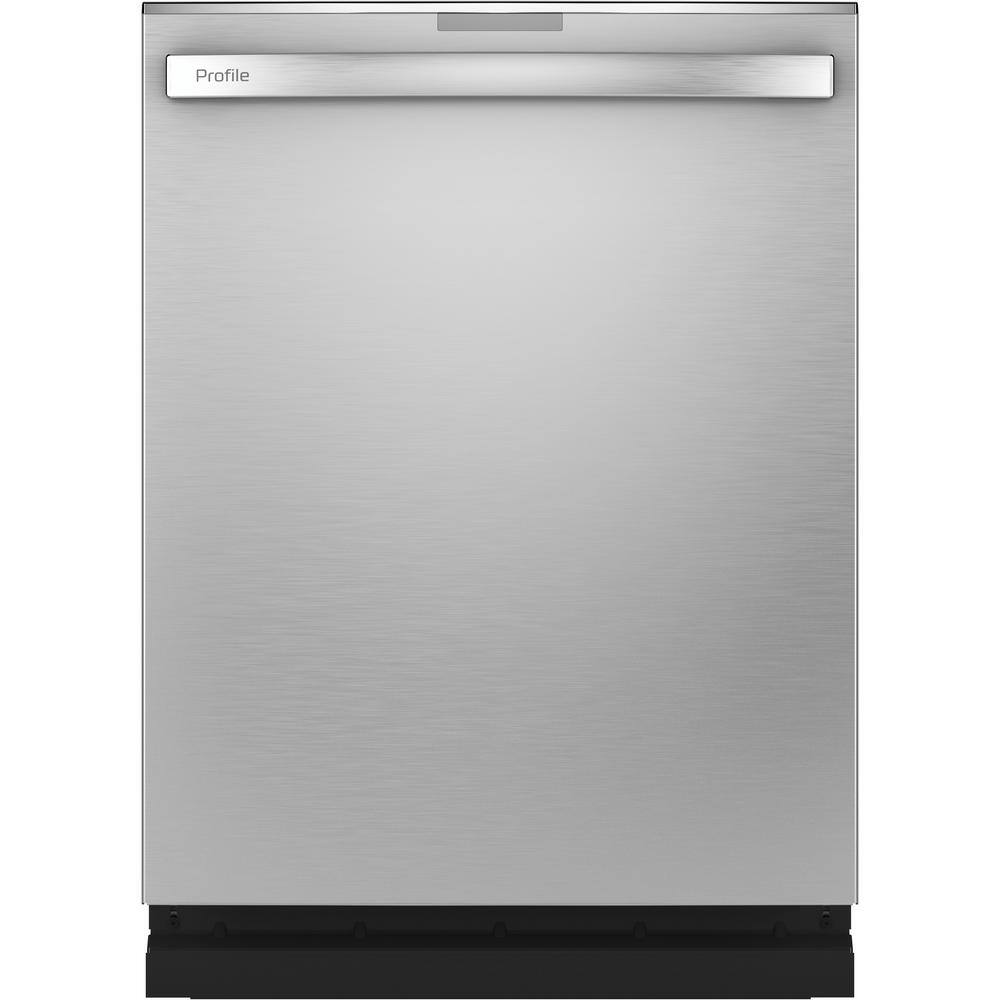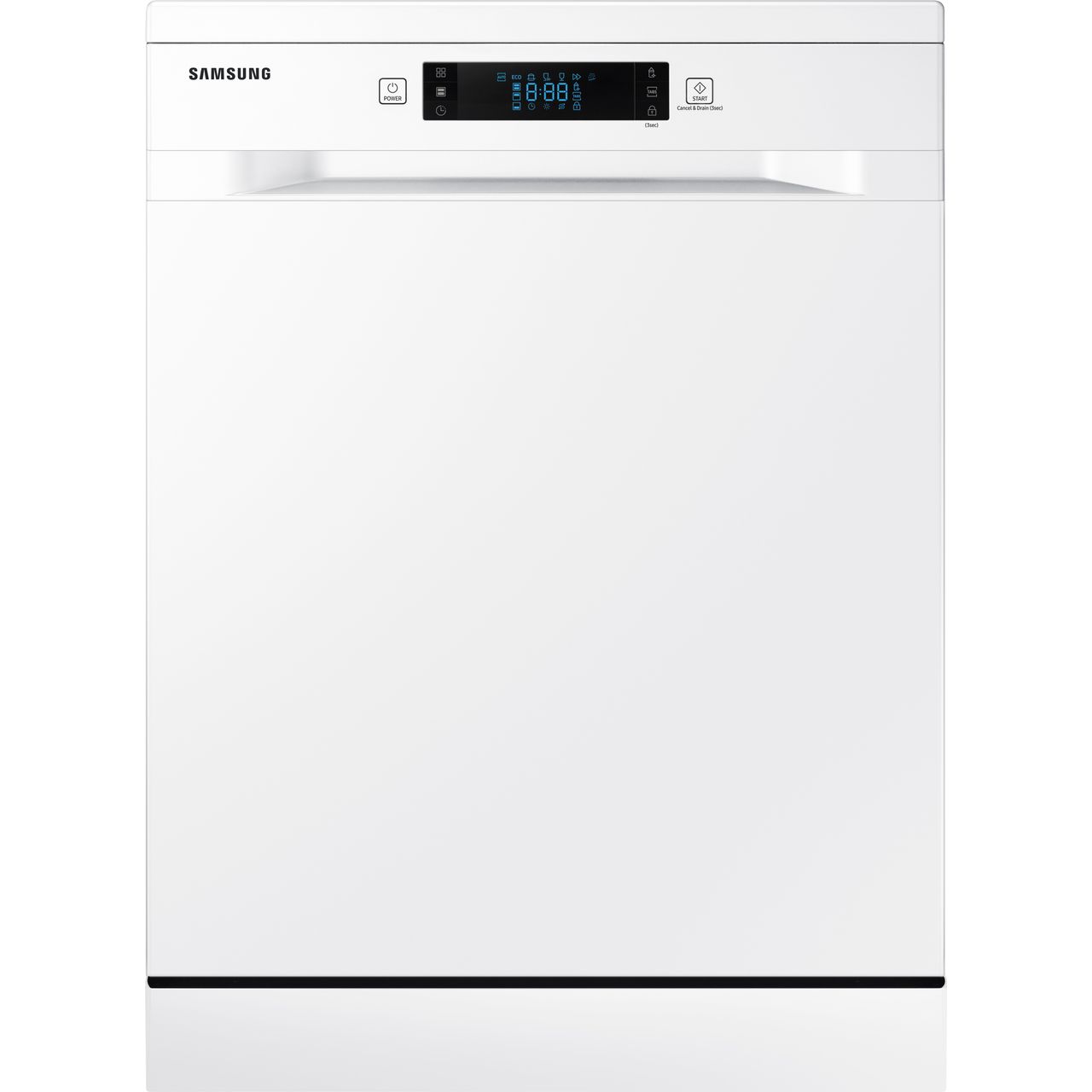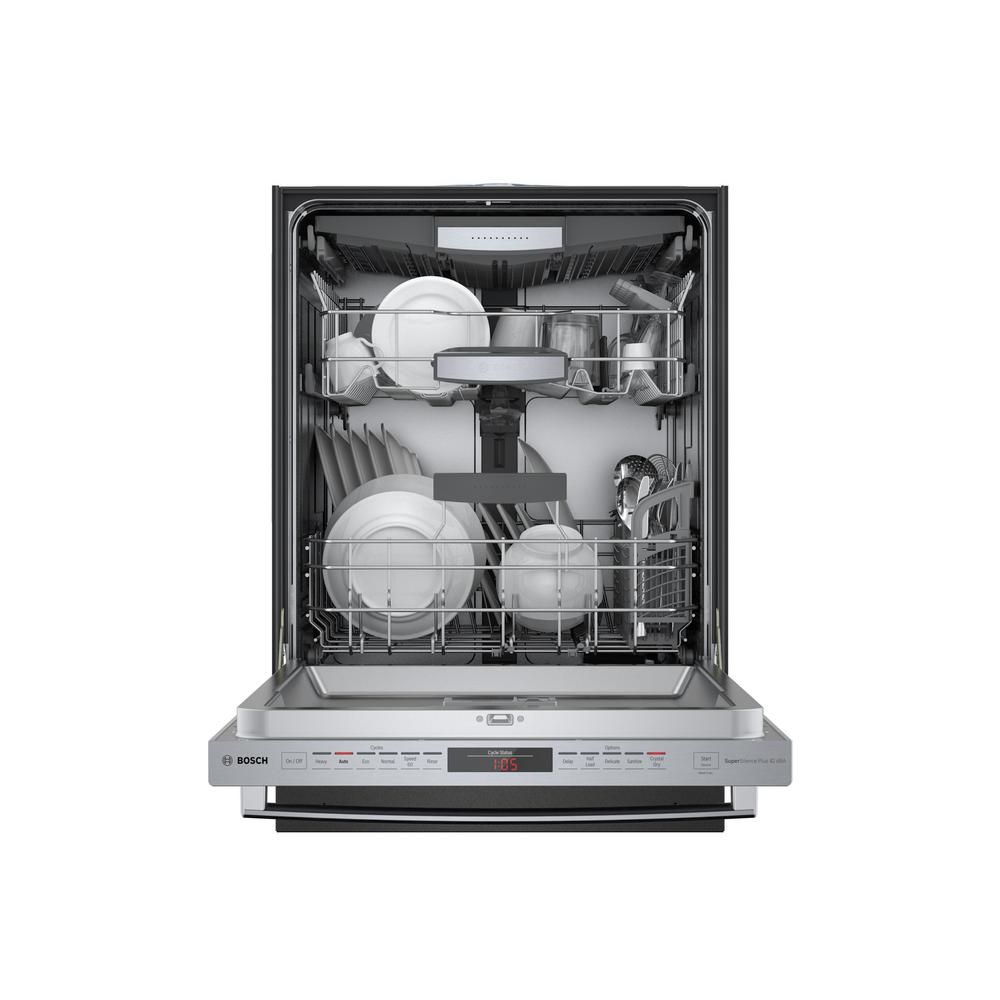GE Profile 24 in. Fingerprint Resistant Stainless Steel Top Control Built-In Tall Tub Dishwasher with 3rd Rack and 45 dBA
45 dBA quiet, but powerful and efficient cleaning. Dry Boost dries items up to 3x more. Dedicated silverware jets provide table-ready silverware.
GE Profile products offer the best in contemporary design matched with the latest in appliance technologies to transform the way you live. This collection sports a bold, dramatic look and state of the art features. This collection provides the perfect combination of style and innovation throughout your kitchen.
- Dry Boost with Fan Assist – Use the latest in drying technology to get hard-to-dry items like plastic tumblers up to three times drier than other heated cycles can
- Deep Clean Silverware Jets – No matter how you load your silverware basket, powerful jets blast away stuck-on food for silverware that’s always spotless
- Bottle Jets – Clean hard-to-reach areas inside tall items with up to 4 dedicated jets integrated into the upper rack that shower water deep inside for the ultimate clean
- Third Rack – Now there’s a place for miscellaneous items and gadgets, thanks to an additional rack at the top of the dishwasher that’s ideal for plastic lids, pizza slicers and more.
- Steam + Sani – Loosens tough soils before any cycle virtually eliminating the need for soaking or pre-rinsing dishes. Plus a High-temperature rinse sanitizes and reduces 99.999% of bacteria found on dishes
- Fingerprint Resistant Stainless – An advanced finish that easily wipes away fingerprints to keep your appliances clean
- Piranha Hard Food Disposer – To ensure consistently clean items, this stainless steel blade rotates at 3,600 RPM to pulverize food particles and helps to prevent large particles from clogging the wash arms
- Lower rack multi-position, fold-down tines – Configure racks to fit your dishes with adjustable loading options including multi-position, fold-down tines
- Adjustable Full-extension smooth-glide upper rack – Loading and unloading is smooth and simple with a durable rack that fully extends on 48 ball bearings
- 16 place settings – Extra capacity to ensure easy cleanup from your largest gatherings
- 45 dBA – Ultra-quiet operation creates a peaceful kitchen environment even as it delivers powerful wash performance
- Active Flood Protect – An internal sensor recognizes and prevents potential overflow situations from occuring, providing peace of mind for every cycle
- Approx. Dimensions (in.) – 34 H x 23 3/4 W x 24 D
- Limited 1-year entire appliance warranty
Additional information
| Cut-Out Depth x Height x Width (in.) | 24 x 34 x 24 |
|---|---|
| Depth - Door Shut (with Handle) (in.) | 24 |
| Depth - Door Shut (without Handle) (in.) | 24 |
| Depth With Door Open 90 Degrees (In) | 24 |
| Dishwasher Size | 24 |
| Height - Maximum (in) | 34.63 |
| Height - Minimum (in) | 33.38 |
| Product Depth x Height x Width (in.) | 24 x 34 x 23.75 |
| Certifications and Listings | Energy Star,UL Listed |
| Manufacturer Warranty | Limited 1-year entire appliance |






by Susan
Love the color; top rack is great; middle rack moves up and down easily; lots of flexibility in the bottom rack with the fold-down tines; dries well. I just wish I had options for moving the silverware rack or taking it out altogether, but it sits on a special utensil spray feature that prevents me from putting anything else in that spot.
by Nancy
Extremely polite delivery drivers and installers! Worked efficiently, tested equipment, left work space, spotless! Great job!!!
by Fussy
Have never been happier with a dishwasher! Cleans and dries to perfection. Inside is smaller than dishwashers in the past, but cleaning is absolutely the best!
by Rich
Really enjoy the quietness of the unit, and seems to clean all items well no matter how they are positioned in the racks.
by Steve
This GE product is beautiful to look at and it cleans and dry’s as I needed it.
by Schmidt
The control panel is located on the top of the door and not visible when closed. This appliance is so quiet, I don’t know it’s running and have inadvertently not set it correctly to start, walked away and thought I was washing dishes when I wasn’t. My fault, since the display indicates whether washing is taking place! I chose this model for the 3rd rack which is very convenient and the water bottle “sprayer” option. Unfortunately, most of my water bottles are taller than allowed in the intended space. Therefore, I haven’t used that option yet but would add another half star to this overall rating for the rest of its design and functionality.